Metal badges’ materials include copper, iron, zinc alloy, and gold/silver for armbands, epaulets, business, IP brooches, medals, and trophies. In general, metal badges are mainly made by stamping, die-casting, printing, and other processes. The surface of the badge can be electroplated with gold, ancient gold/silver, nickel, and other electroplating effects. Custom metal badges have simple and smooth lines and uneven patterns. Surface color processes such as baking paint, enamel, and printing are helpful to make the product richer. Gold and silver badges are the most expensive. Followed by bronze badges, and zinc alloy badges. Iron badges are the cheapest.
Acctrims is a custom metal badges & pins maker and wholesaler. You can customize any pin badges, brass badges, printed metal badges, engraved magnetic badges, metal labels. Custom metal badges & enamel badges have wide use in many enterprises. Such as personnel level, department classification, company awards, and certification. Who doesn’t like good looks?
The highlight of metal badges is high preservation, not easy to oxidize and corrode. And they have bright colors and exquisite workmanship. Some people will use their family or classmates’ graduation photos to make badges to keep as a souvenir. Customize a set of metal badges that belong to yourself or your family to keep the memory, why not do it? After all, some things cannot be measured with money.
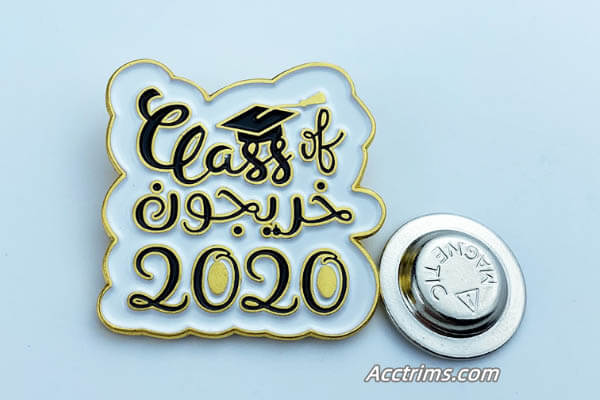
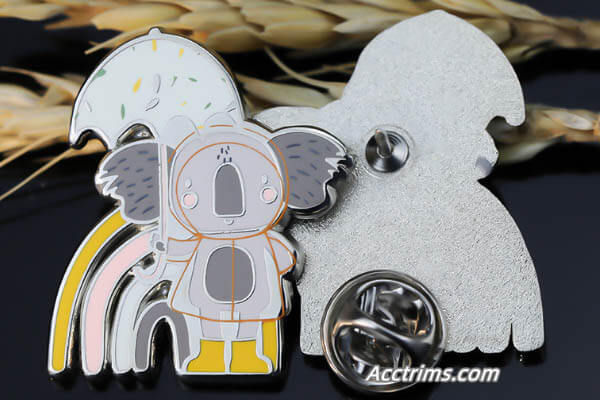
How many processes of metal badges are there?
The badge-making process includes stamping, die-casting, baking paint, imitation enamel, glue, etc. Among them, stamping and die-casting are more common. The coloring process includes enamel, imitation enamel, baking paint, glue, printing, etc.
Enamel process
The surface of the enamel badges is flat, smooth, and exquisite. That looks like a texture similar to ceramics. And the metal part is slightly 3D raised. Meanwhile, we can electroplate colors or fill painting colors on it. So, they are the preferred process for badges.
Material: copper, iron, zinc alloy.
Process advantages: they have smooth and flat surface; strong visual impact; high-end process effect; it is the best choice for high-end gifts.
Applications: we can make them as high-end gifts, medals, medals of honor, bookmarks, key chains, handcrafted gift, etc.
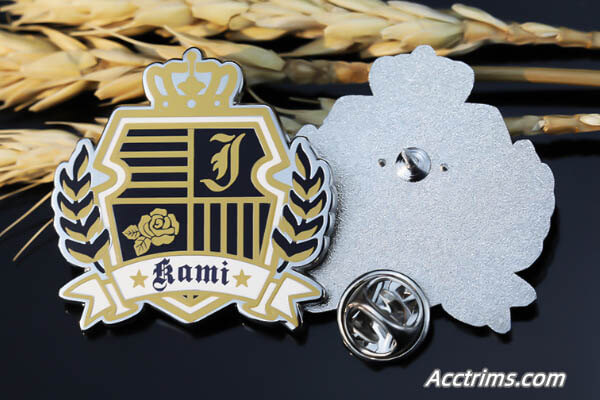
Baking paint process
The surface of the baking paint badge has a strong sense of concave and convex. And the colors are bright and the metal lines are clear. In addition, we can electroplate a variety of rich colors on its surface. They have wide use in companies, team activities commemoration, advertising, brooch, badge, collections, etc.
The baking paint process includes copper, stainless steel, zinc alloy, and iron materials. Among them, zinc alloy is common. It has a relatively moderate price. Stainless steel is cheaper. But, copper-based badge surfaces have obvious bumps and textures. And they are suitable for mid-to-high-end consumption.
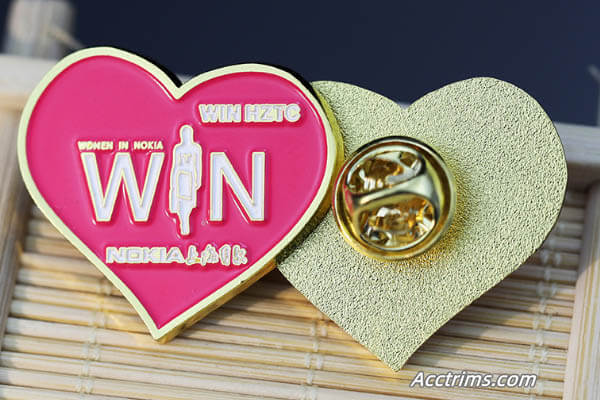
Die casting process
Die-cast badges are usually made of zinc alloy materials. Due to the low melting point of zinc alloy materials, we inject them into the mold after heating. And then complex and difficult embossed hollow badges can be made. So, they are suitable for all kinds of complex and fine hollow 3D products.
How it works: we heat and melt Zinc alloy at high temperatures and inject them into the mold.
Material: Zinc Alloy.
Applicable products: all kinds of commemorative coins, car logos, medals, trophies, etc.
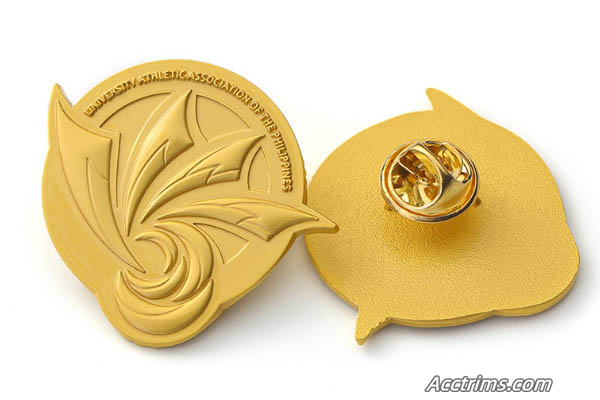
Stamping process
The metal badge made by the stamping process has a high-end texture. And it is wear-resistant, and not easy to deform. The line logo is clear. Further, we can electroplate rich colors on the surface.
How it works: Use copper, iron, and aluminum materials to extrude the concave-convex feeling vigorously with a steel die. Then use the external force die for punching.
Material: Copper, Iron, Aluminum, Stainless Steel.
Process advantages: perfect surface 3D metal frosted texture.
Use: They are perfect for commemorative coins, key chains, cufflinks, tie clips, medals, etc.
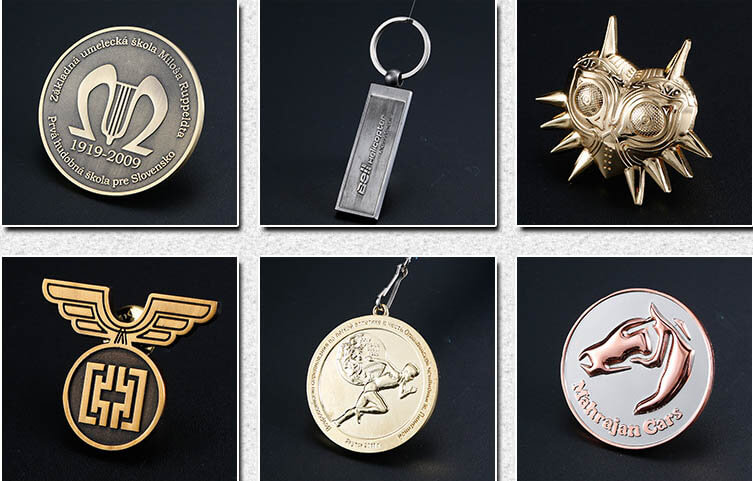
Epoxy process
In order to protect the surface of the baking painted badge from being scratched. We will add crystal clear resin glue to the badge. But, the finished badge has no metallic texture. So, w call it the epoxy process
Working principle: Drop resin glue onto the surface based on the baking paint process. Then, we bake and dry it.
Material: copper, iron, zinc alloy.
Process advantage: The surface has a slight curvature, which can protect the badge surface. It can also prolong the product use time.
Applications: business/activities/promotion badges, medals, key chains, etc.
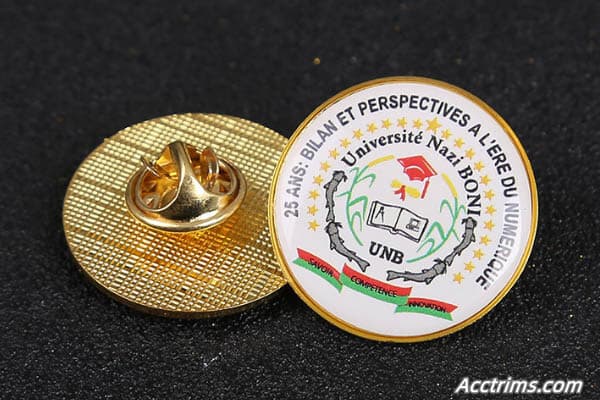
Applications for metal badges
| Anniversary celebration | Welfare commendation |
| Enterprise listing | Conference activities |
| Image promotion, public relations | School celebration commemoration |
| Openings, advertising, festivals | Corporate logo, car logos |
| Club, awards, business | Points redeem gifts, promotional gifts |
| Blind box | IP brooch |
| Cartoon image | Various commemorative coins |
| Medals, trophies | Armbands, Epaulets |
How to determine the metal badges size?
Application occasions and design drawings determine the custom size. In general, it is more appropriate to use 20-25mm for the badge worn on the chest. So, we just need to calculate the size based on the diameter of the longest side. The round badge is the size of the diameter.
But the size of the badge will directly affect the price. The bigger the size, the higher the price. Because it consumes more material. Production time is also longer. However, it’s not that the smaller the size, the cheaper. If the size is too small and the design pattern is complicated, the price will be relatively high.
Try to find the right price-quality ratio. The size of the design badge has a great relationship with the comfort of wearing it. Most badges are worn on the left chest. But there are some conference badges that need to wear on the collar of a suit. The armbands and collars have relatively fixed positions.
When wearing the badge, pay attention to the size and weight of the badge. Some small and lightweight badges can be equipped with magnets. This also avoids pinholes in clothing. When wearing the badge, pay attention to the color matching the clothes. When pregnant women and children wear badges, try to use magnet accessories so as not to stab the skin.